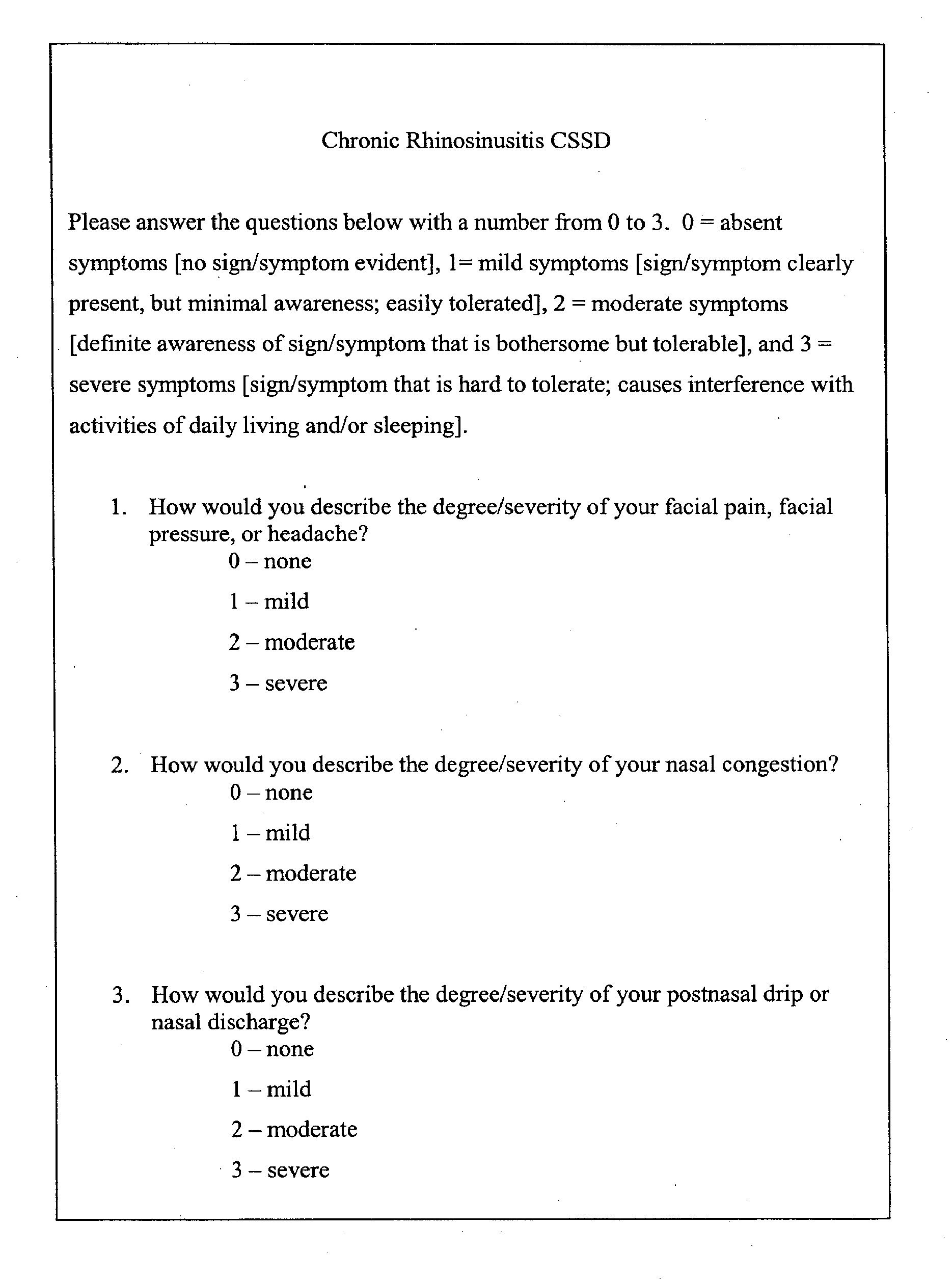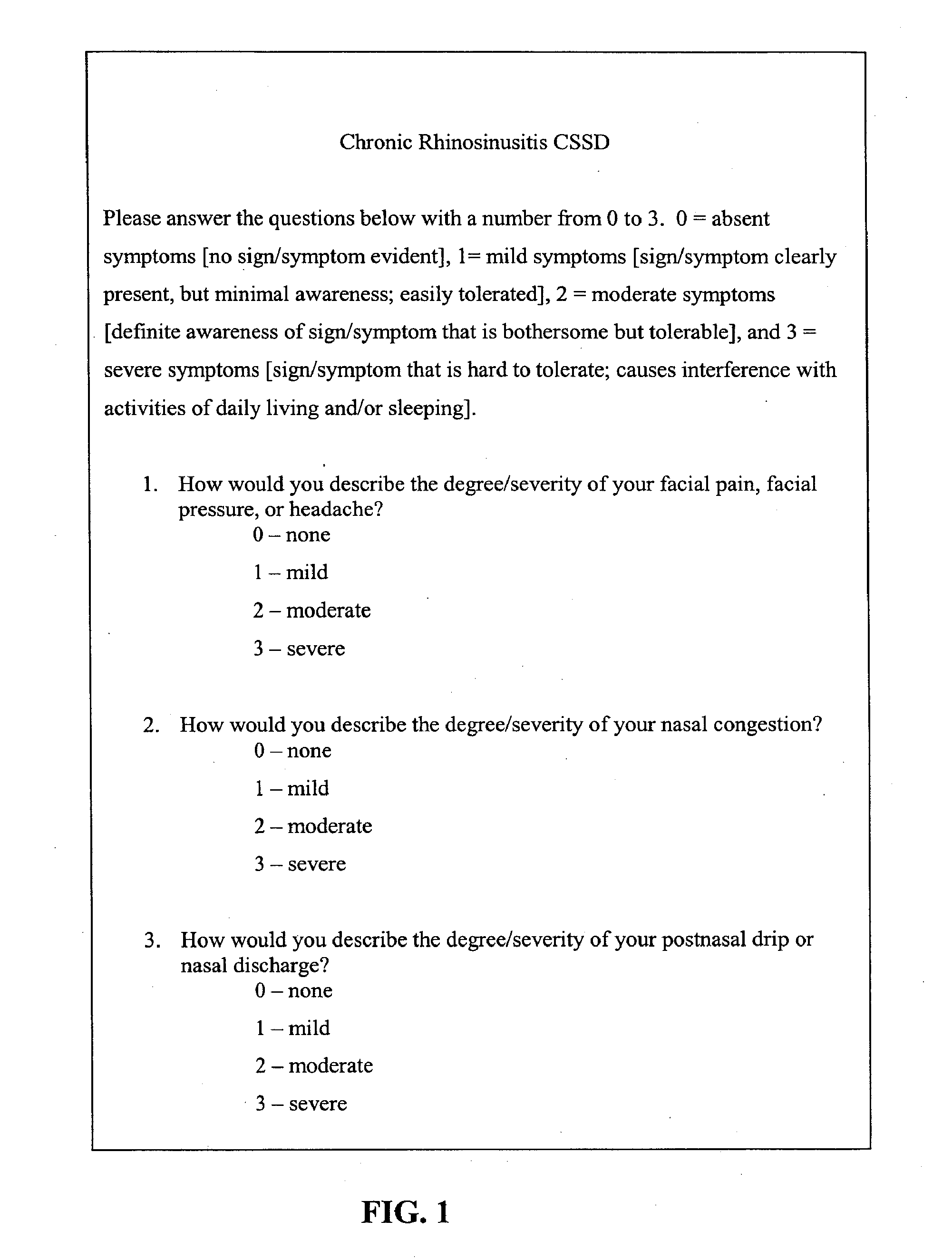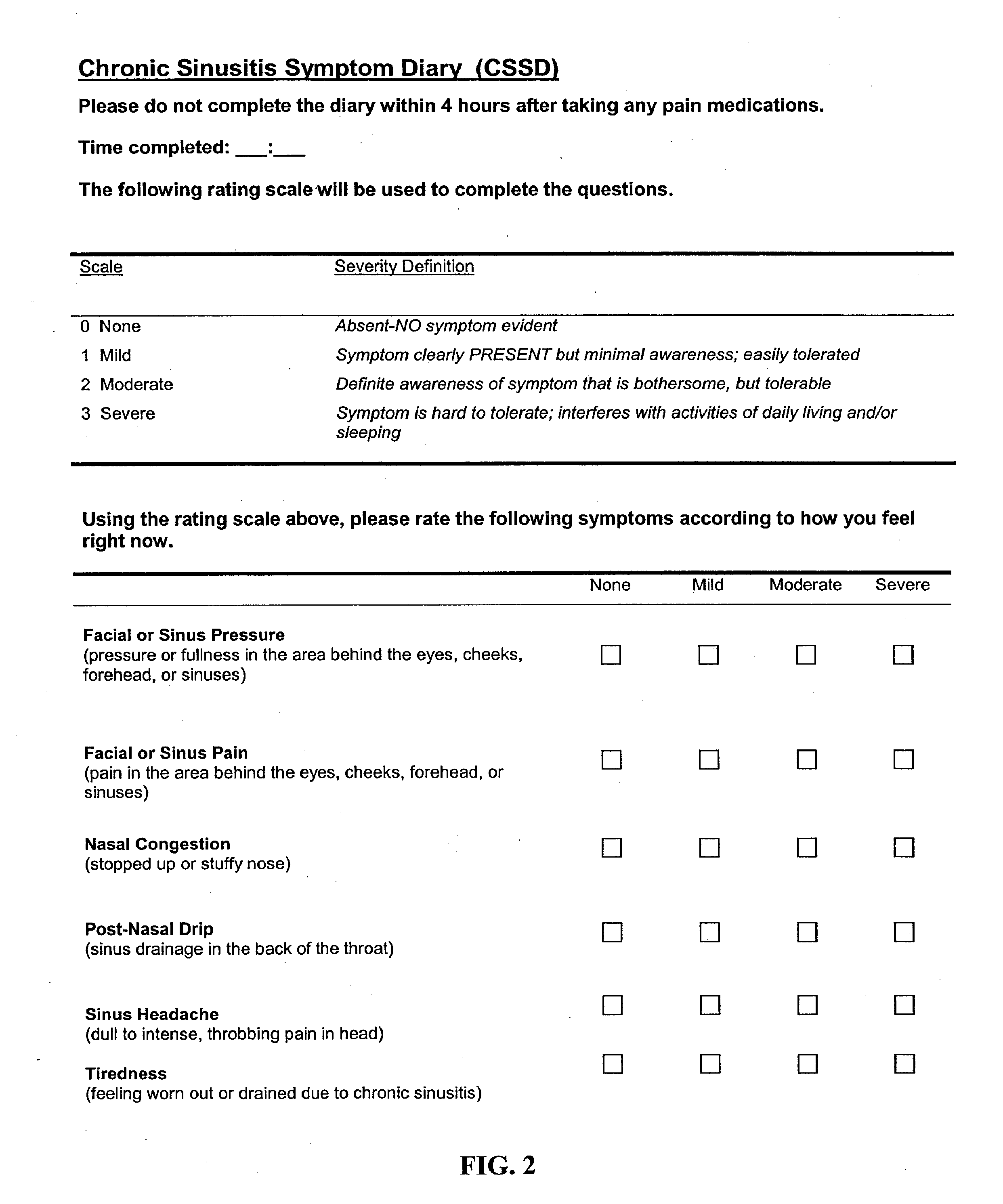Methods of measuring symptoms of chronic rhinosinusitis
- Summary
- Abstract
- Description
- Claims
- Application Information
AI Technical Summary
Benefits of technology
Problems solved by technology
Method used
Image
Examples
example 1
[0114] The following systems and methods disclosed herein correspond to that described above. The methods below describe with particularity embodiments of methods of assessing a patient population's response to a treatment regiment for chronic rhinosinusitis. Any methods which are not particularly described will be generally known and available to those skilled in the art of statistical analysis of clinical data.
[0115] A Phase II clinical trial was conducted to assess the effectiveness of a particular treatment regimen for Chronic Rhinosinusitis. This study was conducted as a randomized, double-blind, placebo-controlled, multi-center clinical study to assess the effectiveness of the drug composition SPRC-AB01 on the treatment of Chronic Rhinosinusitis. Patients were screened for inclusion in the clinical trial based upon the following selection criteria:
[0116] 1. History of Chronic Rhinosinusitis;
[0117] 2. History of sinus surgery for Chronic Rhinosinusitis;
[0118] 3. Signs / sympt...
example 2
[0123] Statistical analysis was performed on the data collected from the patients described in Example 1 using their completed TSSS questionnaires. In making the statistical analyses, the mean weekly average of the patient rated daily TSSS scores were used to determine efficacy of treatment. The primary efficacy endpoint was the change from baseline (as calculated from the placebo run-in period) in the average subject-rated TSSS. The differences between the SPRC-AB01 groups and placebo were assessed using an ANCOVA model with factors for study sites, treatments, and baseline TSSS. Statistical analysis was conducted using the SAS® software package version 9 for Windows®. The change from baseline in TSSS was summarized by study day and treatment group with the appropriate descriptive statistics. The results of the clinical study are presented in FIG. 3. Based upon this analysis the following conclusions were made: (1) The 90 mg / 3 ml dose of SPRC-AB01 administered B.I.D. for 21 days re...
example 3
[0124] The clinical validity of the TSSS was assessed using the mean scores of subjects in the groups classified by improvement groups based on a Physician Global Assessment using end of study data. Results from this evaluation are provided in Table 1. The results from the Physician Global Assessment support the clinical validity of both the Subject Rated and the Physician Rated TSSS.
TABLE 1Physician Global AssessmentReliefCompleteMarkedModerateSlightNoneANOVAScale (EOS)NMeanNMeanNMeanNMeanNMeanP ValueSubject TSSS61.13182.41113.99114.80125.11Subject TSSS Change6−4.4518−3.7811−3.0511−2.1612−1.180.0005Physician TSSS60.50181.83113.09115.18125.50Physician TSSS Change6−4.5018−4.5011−3.7311−2.0012−0.33
PUM
 Login to View More
Login to View More Abstract
Description
Claims
Application Information
 Login to View More
Login to View More - R&D
- Intellectual Property
- Life Sciences
- Materials
- Tech Scout
- Unparalleled Data Quality
- Higher Quality Content
- 60% Fewer Hallucinations
Browse by: Latest US Patents, China's latest patents, Technical Efficacy Thesaurus, Application Domain, Technology Topic, Popular Technical Reports.
© 2025 PatSnap. All rights reserved.Legal|Privacy policy|Modern Slavery Act Transparency Statement|Sitemap|About US| Contact US: help@patsnap.com



